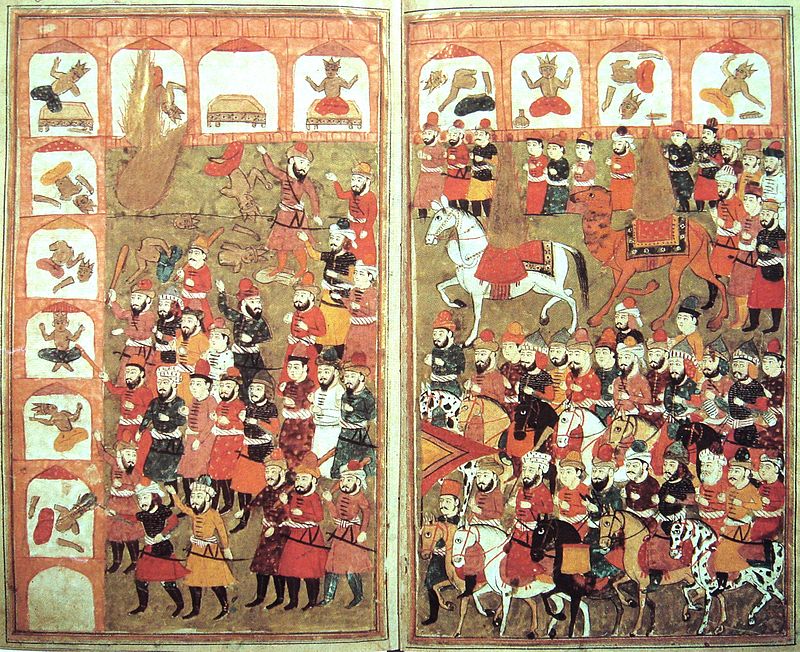First Siege of Constantinople
Between 674 and 678 AD, the Arab armies under the Umayyad Caliphate besieged the city of Constantinople but failed in their first attempt in conquering the city. One of the Byzantines’ most effective weapon against them was the Greek fire, a medieval flamethrower which protected the Byzantine Empire against Arab invasion for many years. It was such a closely guarded secret that up until today, the weapon’s exact chemical composition remains a mystery. The failed siege of Constantinople is recorded on the Biblical Timeline with World History at 715 AD.
Quickly See 6000 Years of Bible and World History Together

Unique Circular Format – see more in less space.
Learn facts that you can’t learn just from reading the Bible
Attractive design ideal for your home, office, church …
The first siege of Constantinople ended with a peace treaty between the Byzantine Empire and the Umayyad Caliphate. The Arab forces withdrew from Constantinople and set their sights elsewhere in North Africa and southern Spain; Constantinople, however, was a treasure the Umayyad caliphate could not resist. In 715 AD, a man named Suleiman rose as the ruler of the Muslims after the death of his older brother, the caliph Walid I. He wasted no time and resumed the offensive against the city of Constantinople which was now ruled by the Emperor Leo III.

The Second Siege
Emperor Leo knew about and had prepared for an Arab invasion for many months until the fleet commanded by Suleiman sailed past the Dardanelles. The Arab navy (which consisted of 1,800-strong war galleys) was reinforced by an army of 80,000 men (led by Maslama ibn Abd al-Malik) that passed through Asia Minor. Both forces closed in on Constantinople almost at the same time.
Luck was not on Suleiman’s side. A lot of his war galleys were destroyed when his fleet met Emperor Leo’s Navy who used the Greek fire to its greatest extent. It did not help Suleiman and the Arabs that the wind conditions were favorable to Leo’s navy, so many of the Umayyad ships either sank or burned during the battle. The fighting grew more intense, but Suleiman was not meant to see the end of it. During a break in 717 AD, Suleiman suddenly died of an illness while his navy suffered through a very harsh winter as they waited to attack Constantinople again.
His cousin Umar II was declared as caliph after Suleiman’s death. He sent troops from Egypt to reinforce the army that waited just beyond Constantinople. Emperor’s Leo’s troops were also replenished with a large Bulgarian army led by Constantinople’s ally, King Terval of Bulgaria. More than 20,000 Arab died during the siege and a significant number of Byzantine men also perished during the war. The new caliph Umar II decided to withdraw his troops from Constantinople on August 15, 718 AD and the city (as well as the Eastern side of Europe) remained out of the caliphate’s reach for hundreds of years until its fall to the Ottoman Empire.
Picture By Unknown – Codex Skylitzes Matritensis, Bibliteca Nacional de Madrid, Vitr. 26-2, Bild-Nr. 77, f 34 v. b. (taken from Pászthory, p. 31), Public Domain, https://commons.wikimedia.org/w/index.php?curid=302463
Bauer, Susan Wise. The History of the Medieval World: From the Conversion of Constantine to the First Crusade. New York: W.W. Norton, 2010.
“Siege of Constantinople (717-718).” Siege of Constantinople (717-718). Accessed July 13, 2016. http://www.thelatinlibrary.com/imperialism/notes/constantinoplesiege.html.
Treadgold, Warren T. Byzantium and Its Army, 284-1081. Stanford, CA: Stanford University Press, 1995.










